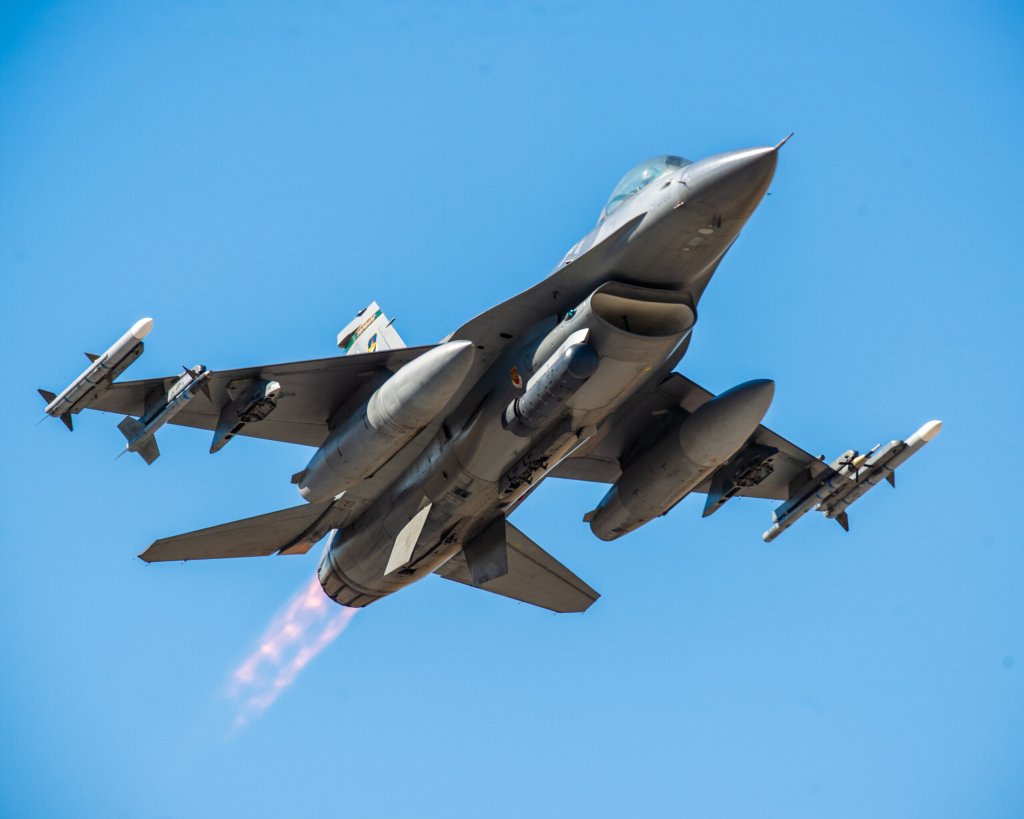At 0730 local time on Oct. 5, 2023, American forces in Syria detected an unmanned aerial vehicle operating over a base near Tal Baydar, where U.S. troops are working alongside the Syrian Democratic Forces (SDF). The drone was operating in a restricted American zone, Pentagon spokesperson Brig. Gen. Patrick Ryder told reporters. As the troops on the ground headed for the relative safety of hardened shelters, the U.S. tried to determine what it was and what it was doing.
Eventually, it left the area, and that would have been the end of the situation, but it reentered the same airspace four hours later – and it was headed right for U.S. troops. American commanders on the ground deemed it a threat and F-16 Fighting Falcons shot it out of the sky ten minutes later.
It turned out the drone was a Turkish Bayraktar TB2, a medium-altitude, long-endurance drone. Turkey is not fighting against the United States in Syria, the Turkish military and U.S. military are fighting against each other’s interests in the country. Both are longtime NATO allies, but Turkey has been fighting a Kurdish insurgency since the late 1970s, namely in the form of the PKK, or Kurdistan Workers’ Party.
While the PKK has been named a terrorist organization by both Turkey and the United States, the U.S. doesn’t recognize all Kurdish militias as terrorists. Turkey, and especially its increasingly authoritarian President, Recep Tayyip Erdoğan don’t really make distinctions when it comes to armed Kurdish groups.
Fast-forward to 2014, when the Islamic State was capturing vast swathes of territory in Syria and Iraq while the Syrian government was descending into chaos and the Iraqi Army was running for its life. The only ground forces that could stand up to the ISIS assault in the region were the Kurdish militias, namely the YPJ and YPJ, with the help of U.S. air power.

In 2015, as the Kurds, along with growing Arab and foreign groups, finally began to push ISIS out of Iraqi cities, the U.S. formed the SDF, which was made up of mostly Kurdish militants, along with Turkmen, Chechen, Arab, and Armenian fighters. The United States armed, trained, and backed the SDF with special operations forces to destroy the ISIS caliphate, which it did.
On Oct. 17, the SDF captured the Islamic State “capital” at Raqqa, then began crushing the pockets of resistance in places like Syria’s eastern province of Deir el-Zour and the city of Baghouz. On March 23, 2019, the SDF declared that its capture of ISIS’ territorial gains was complete.
Meanwhile, Turkey had been providing material assistance to the Free Syrian Army since 2011, but in 2016, it launched Operation Euphrates Shield, an invasion of northern Syria. The Turkish Army not only engaged the Islamic State, but also attacked elements of the SDF, calling Kurdish militants “terror groups.” It has since officially designated the U.S.-backed SDF a terror group. Turkish airstrikes on SDF positions have disrupted the SDF’s fight against Islamist militants and have even targeted U.S. coalition forces. PKK terrorists have responded with car bombs in Ankara, Turkey’s capital city.
American support for the SDF, despite the fact that the alliance is responsible for the destruction of the Islamic State in Iraq and Syria, is a continual thorn in the side of Ankara. It has been a major source of strife in relations between the two NATO allies. But with a Bayraktar drone, armed with air-to-ground missiles bearing down on U.S. troops, the United States says it has a right to defend its forces, in case the Turkish zeal of attacking Kurds ends with American deaths.

